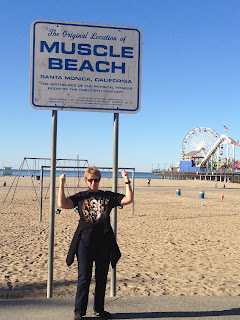Terry here, with our question of the week: Look at your last book and count the number of times you used is, are, was, and were. Thoughts? Lessons learned?
I have belonged to a particular writer’s group for thirty years. Many years ago one of the members brought the use of the word “to be” to our attention. She cautioned that those words—is, are, and were--could be stand-ins for stronger verbs: Instead of “Jim Ziskin IS coming for dinner. Mary IS going to serve soup,” say, “Jim Ziskin promised to come for dinner. Mary plans to serve soup.” The second is livelier, with verbs that have more action than the simple “is.”
Oh those pesky “favorite words.” I hardly see them when I’m writing. It’s not just the verbs stemming from “to be,” but also words like “just” or its twin “just about,” or “thing,” as in “something, anything, nothing.”
The problem IS that replacing them might lead to stilted usages. But often their use IS lazy, and that’s (IS) what editing hopes to ferret out. As writers we can try to replace them with stronger words, words that actually have more meaning.
Once, in a critique I told an author that he used the word “thing” to hide what he really meant. As in, one character asking the other, “What is this thing we’ve got between us?” “Thing” could mean, well, ANYthing. I wanted to know what the real question was: “What is this emotional pull we’ve got between us?” “What is this animosity that comes between us?” “What is this…” And by the way, “got” is another one of those lazy words.
How much stronger this would be: “What feelings are we fighting?” Oops, “are” shows up in the sentence. So another stab at rewriting, “What feelings between us do we constantly struggle with?” (using “do instead of are feels like a cheat). Oddly, it feels stilted. Would one person actually say that to another? And that’s the bottom line: IS it authentic?
“To be” is powerful. As humans “being” is everything. By using the conjugations of “to be” we are always announcing ourselves. “I AM here!”
And we acknowledge others, “He IS here.”
And we acknowledge others, “He IS here.”
In order to fulfill this week’s question, I reread the first couple of pages of the latest Samuel Craddock that will come out in December:
The first page:
“It’s (IS) just me.”
It’s (IS) Loretta…She’s (IS) here with another bagful of…
It’s (IS) only seven in the morning…”
Later in the page, “He (Dusty) IS sniffing the air…”
I thought about how I could I make those sentences stronger, how I could avoid the use of the dreaded “Is.”
In the first sentence, nothing came to mine. This is the way people talk. “Hi, it’s me.” A human announcing herself: I am!
But in the second instance I could amend it to, “Loretta has arrived with another bag of…”
And then, “It’s only seven.” Can’t think of another way to say it. That’s the way we use time: IT IS.
As for Dusty, I could say, “Dusty sniffs the air….” But is it really worth combing through acres of prose to find those little nits to pick?
I try in my writing to use lively language, verbs that convey more than “It is.” But in dialogue, to be authentic, it’s sometimes impossible to avoid "it is" without having a character sound awkward. Still, I write with an eye to punching up the language, making it livelier and more engaging. That IS all we can ask.
By the way, the title of the new Craddock is (note is) The Curious Poisoning of Jewel Barnes. No cover yet, but stay tuned...


No comments:
Post a Comment